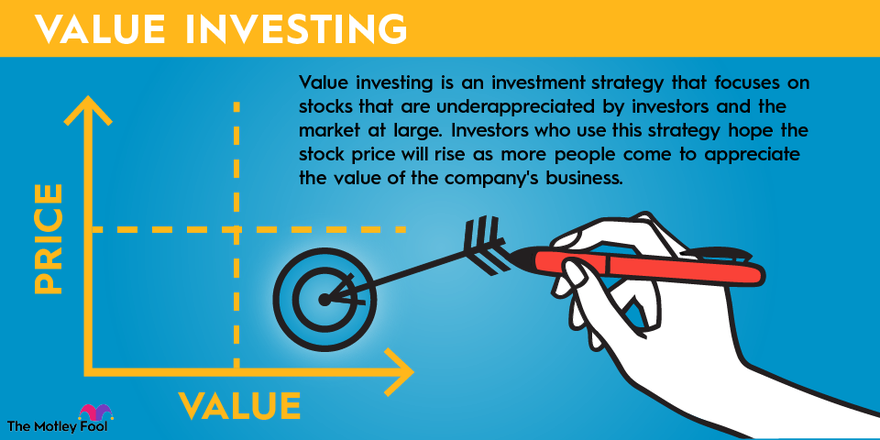Despite a bull market that began in 2023, value investors hunting for a good bargain can still find some undervalued companies on sale.
An undervalued stock is a publicly traded company that's trading for less than it should be, often for overblown short-term concerns. Typically, these companies are consistently profitable and have attractive long-term growth prospects. Share prices are also cheap compared to many of their peers. They're also cheap compared to the amount of future profit expected to be generated. Such stocks can be great options for patient buy-and-hold investors willing to wait for hidden bargains.

Although investors are always on alert for a good deal, it's important to remember that some stocks are cheap for a reason. It may be that a company's growth prospects have diminished, it's losing money, or it's losing business to new competitors.
Whatever the reason, stocks like these (sometimes called value traps) are not considered undervalued even if they trade at very low prices.
Intrinsic Value
Our list of undervalued stocks in 2025
Here are five high-quality, undervalued large-cap stocks to consider, screened for profitability, and positive earnings.
1. Berkshire Hathaway

NYSE: BRK.B
Key Data Points
2. Target

NYSE: TGT
Key Data Points
3. Micron Technology
4. British American Tobacco

NYSE: BTI
Key Data Points
5. Lennar

NYSE: LEN
Key Data Points
Finding undervalued stocks
Undervalued companies aren't necessarily the biggest ones out there. They can also be mid-cap or small-cap companies or even growth-oriented companies that trade for less than their peers.
In addition, don't just evaluate the "cheapness" of its P/E ratio or focus on its share price being low relative to its 52-week performance -- it can always go lower.
There's no universal formula for finding value stocks, but you may want to begin by checking:
- Profitability: Look at key metrics like operating margin and profit margin. Consistently high margins relative to peers indicate strong profitability.
- Return on equity (ROE): ROE measures how effectively a company uses shareholders' equity to generate profits. A higher ROE, typically above 10%, is a good sign of management efficiency and profitability.
- Return on assets (ROA): ROA indicates how efficiently a company uses its assets to generate profit. ROAs above 5% are generally considered good, but can vary by industry.
- Price-to-earnings ratio: The P/E ratio measures how much investors are paying for a company's earnings. Comparing the P/E ratio to that of the S&P 500 is one way to get a sense of the relative value of a stock. You can also compare a company's P/E ratio to its peers.
- Price-to-book ratio (P/B): A P/B ratio under 1 suggests the stock may be undervalued, but be cautious, as a very low P/B could indicate underlying problems. Compare it with the industry average for context.
- Earnings growth: Sometimes a stock is undervalued for a reason, such as poor growth prospects. Check the company's historical and projected earnings growth rates. Consistent growth is a positive indicator, while declining earnings could be a red flag.
- EV/EBITDA: This ratio compares a company's enterprise value (EV) to its earnings before interest, taxes, depreciation, and amortization (EBITDA). It provides a more comprehensive view than the P/E ratio because it factors in a company's debt. Ensure you compare the EV/EBITDA ratio to peers within the same sector to gauge relative value.
Benefits and risks of undervalued stocks
Like any other group of stocks, there are both benefits and risks ot investing in undervalued stocks. Let's take a look at both sides of the coin here.
Benefits:
- Undervalued stocks are well set up to outperform the market. If the thesis is correct, the stock should outperform as the price moves higher to reflect the true value.
- Undervalued stocks often pay higher dividend yields since yields go up as price goes down.
- They tend to be lower-risk stocks since their price is already down.
Risks:
- The biggest risk in undervalued stocks is that you're wrong in your assessment and that the stock is a value trap.
- The stock can remain undervalued for longer than you expect.
- Market conditions change and push the stock even lower.
Related investing topics
How to invest in undervalued stocks
- Open your brokerage app: Log in to your brokerage account where you handle your investments.
- Search for the stock: Enter the ticker or company name into the search bar to bring up the stock's trading page.
- Decide how many shares to buy: Consider your investment goals and how much of your portfolio you want to allocate to this stock.
- Select order type: Choose between a market order to buy at the current price or a limit order to specify the maximum price you're willing to pay.
- Submit your order: Confirm the details and submit your buy order.
- Review your purchase: Check your portfolio to ensure your order was filled as expected and adjust your investment strategy accordingly.



